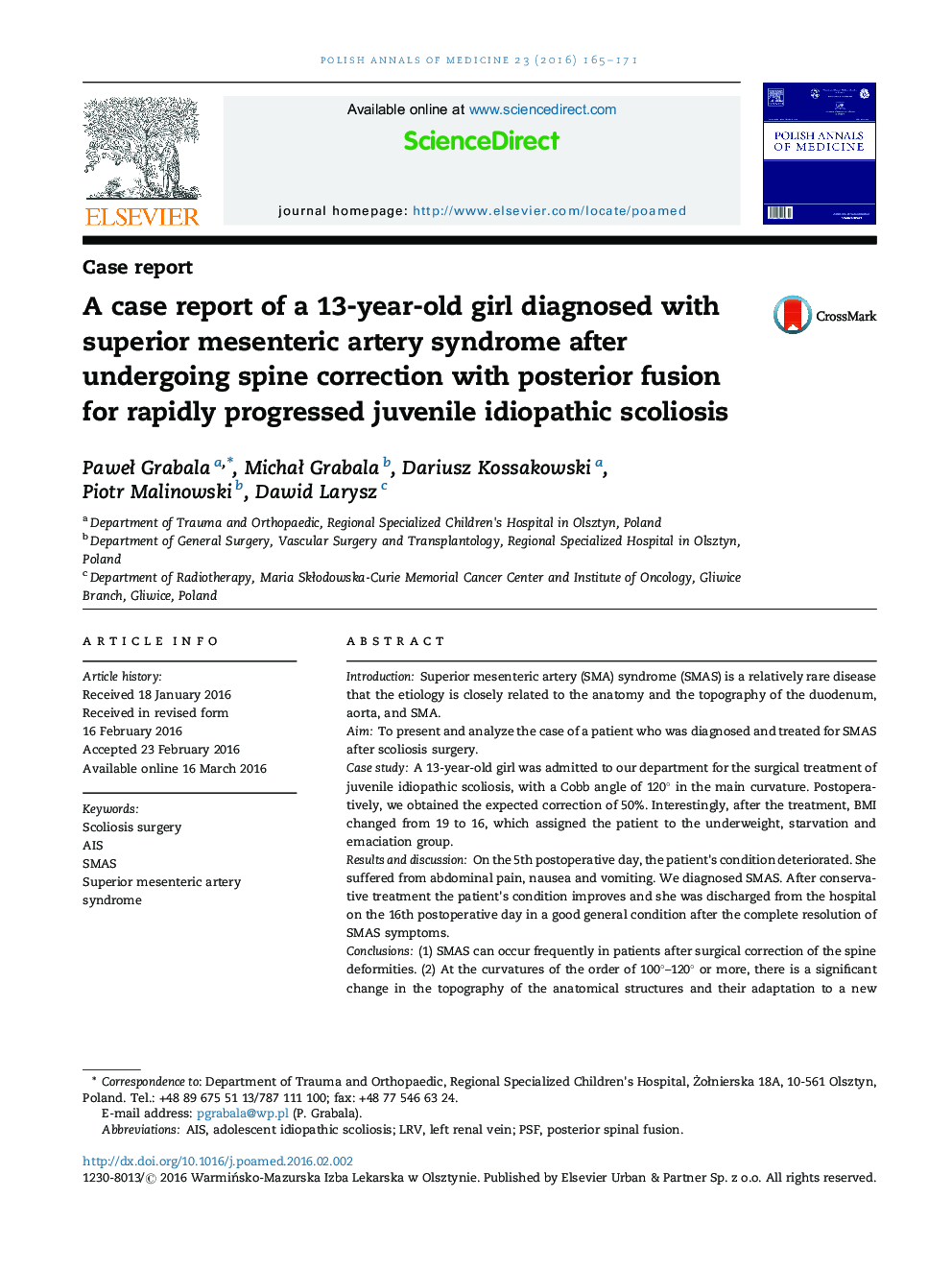| Article ID | Journal | Published Year | Pages | File Type |
|---|---|---|---|---|
| 2675305 | Polish Annals of Medicine | 2016 | 7 Pages |
IntroductionSuperior mesenteric artery (SMA) syndrome (SMAS) is a relatively rare disease that the etiology is closely related to the anatomy and the topography of the duodenum, aorta, and SMA.AimTo present and analyze the case of a patient who was diagnosed and treated for SMAS after scoliosis surgery.Case studyA 13-year-old girl was admitted to our department for the surgical treatment of juvenile idiopathic scoliosis, with a Cobb angle of 120° in the main curvature. Postoperatively, we obtained the expected correction of 50%. Interestingly, after the treatment, BMI changed from 19 to 16, which assigned the patient to the underweight, starvation and emaciation group.Results and discussionOn the 5th postoperative day, the patient's condition deteriorated. She suffered from abdominal pain, nausea and vomiting. We diagnosed SMAS. After conservative treatment the patient's condition improves and she was discharged from the hospital on the 16th postoperative day in a good general condition after the complete resolution of SMAS symptoms.Conclusions(1) SMAS can occur frequently in patients after surgical correction of the spine deformities. (2) At the curvatures of the order of 100°–120° or more, there is a significant change in the topography of the anatomical structures and their adaptation to a new position after surgery. (3) Special attention must be paid to young, lean patients, with BMI below 19, and the postoperative effect of an elongated axis of the spine. (4) Even if SMAS occurs, in most cases it can and should be treated conservatively.
